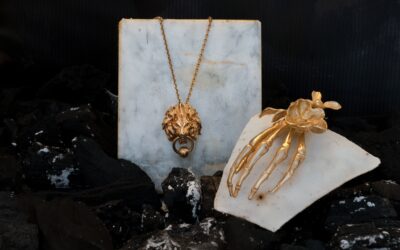The production of custom metal belt buckles is an art that combines technical ingenuity and creative expression.
Designing and crafting these components requires significant expertise in both craftsmanship and industry, along with the use of materials ensuring a qualitatively sound end product.
Every phase of belt buckle production must be carefully monitored to ensure that the final product not only meets functional requirements but also reflects a refined aesthetic, in line with customer expectations.
What are belt buckles?
Buckles are fundamental mechanical elements in the jewelry and fashion accessories industry, especially for belts.
A buckle serves the purpose of fastening and adjusting the length of a belt around the wearer’s waist, ensuring functionality and often contributing to the garment’s aesthetics.
In the production of belt buckles, attention to detail is crucial. These components typically consist of a metal frame, which can be forged, stamped, or engraved, within which the belt slides.
The central part of the buckle, often referred to as the ‘tongue’, inserts into the belt’s holes to secure it firmly. In some more sophisticated buckle models, such as snap or roller buckles, more complex mechanisms replace the traditional tongue.
The design and manufacture of buckles require in-depth knowledge of the materials used—ranging from classic metals to plastic, including alloys and special finishes—as well as awareness of current fashion trends.
Durability and resistance to wear are essential parameters in assessing the quality of a buckle.”
What are the parts of a buckle called?
In the realm of belt buckle production, it is essential to have a comprehensive understanding of the different components that make up this important accessory.
A buckle is primarily composed of four parts:
- The frame: It is the central and most visible element of the buckle around which the belt is threaded. The frame can take various shapes and sizes depending on the design and style requirements.
- The pin (or prong): This part is crucial for the buckle’s functionality as it secures the belt in place. The pin inserts into the holes made in the belt itself, allowing for adjustable sizing as needed.
- The keeper: Not always present in all buckles, the keeper is an additional ring that helps keep the belt’s end in place after it has been threaded through the frame and secured by the pin. This component prevents the belt from hanging freely, enhancing its aesthetic.
- The base (or frame): It is the skeleton of the buckle to which all other elements are attached. The base provides structure and support to the accessory, ensuring strength and durability over time.
What is the buckle pitch?
The buckle pitch is not just a technical detail but a key aspect in belt buckle production that directly impacts the quality and functionality of the finished product.
The term ‘buckle pitch’ refers to the internal distance between the bar of the buckle, where the belt rests, and the pin or tongue that enters the belt’s holes, ensuring closure.
This element is crucial in buckle design and production, as it determines not only the aesthetic appearance but also the functionality and ergonomics of the finished product.
Accurate measurement of the buckle pitch is essential to ensure that the belt can be adjusted with ease and security. A pitch that is too narrow might make it difficult to insert the belt or cause excessive wear of the material, while a pitch that is too wide could reduce the belt’s grip when worn.
As manufacturers of metal components for leather goods, we carefully consider this parameter during the design phase, ensuring that the pitch is suitable for the thickness and type of material used for the belts. Sometimes, innovative solutions are implemented to further enhance the user experience, such as micrometric adjustment systems or snap mechanisms that provide greater precision in adapting to the wearer’s body.
When was the buckle invented?
The buckle, a fundamental element in belt production, boasts a millennia-old history that dates back to the Bronze Age, around 2000 BCE, when the first evidence of this closure mechanism emerged.
Initially conceived as simple hooks or clasps used to secure garments or armor, buckles underwent significant evolution over the centuries.
The first true buckles, resembling those we know today, emerged notably during the Roman period. Designed with a central pin and an arched structure for threading the belt, these buckles were often crafted from precious metals and served both as functional tools and as status symbols, much like they do today.
In the Middle Ages, the buckle became ubiquitous, employed not only for belts but also for shoes, bags, and other accessories. Its production further diversified during the Renaissance, reaching levels of true artistry with the introduction of intricate decorations and advanced crafting techniques.
In the industrial era, with the advent of mass production in the 19th century, buckles became even more common and accessible to all social classes. Technological innovations allowed the creation of stronger and lighter buckles through the use of new materials such as stainless steel and later metal alloys.
Today, the production of belt buckles is a specialized sector that continues to blend functionality and aesthetics.
Metal Buckles Production for Belts, Apparel, Footwear and Bags
Micromet, based in Arezzo, stands out for its expertise in manufacturing high-quality metal accessories. A pioneer in Tuscany, Micromet was among the first to invest in 3D printing technology for metals.
If you’re interested in the production of metal buckles for belts, apparel, footwear or bags, don’t hesitate to contact Micromet Srl. We are available to answer your questions, discuss your specific needs, and collaborate with you, leveraging our experience to create quality metal accessories.



